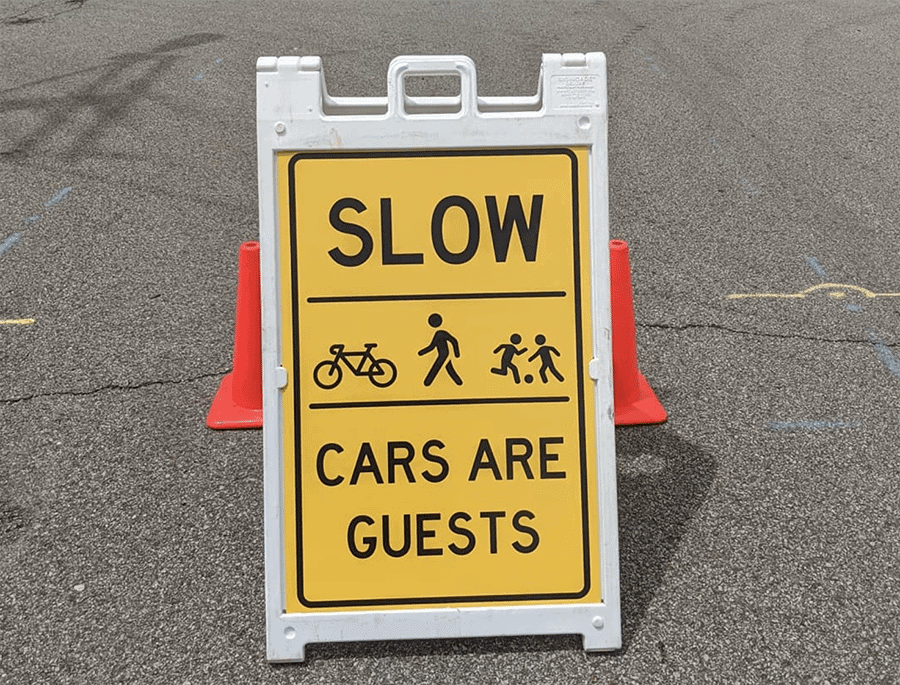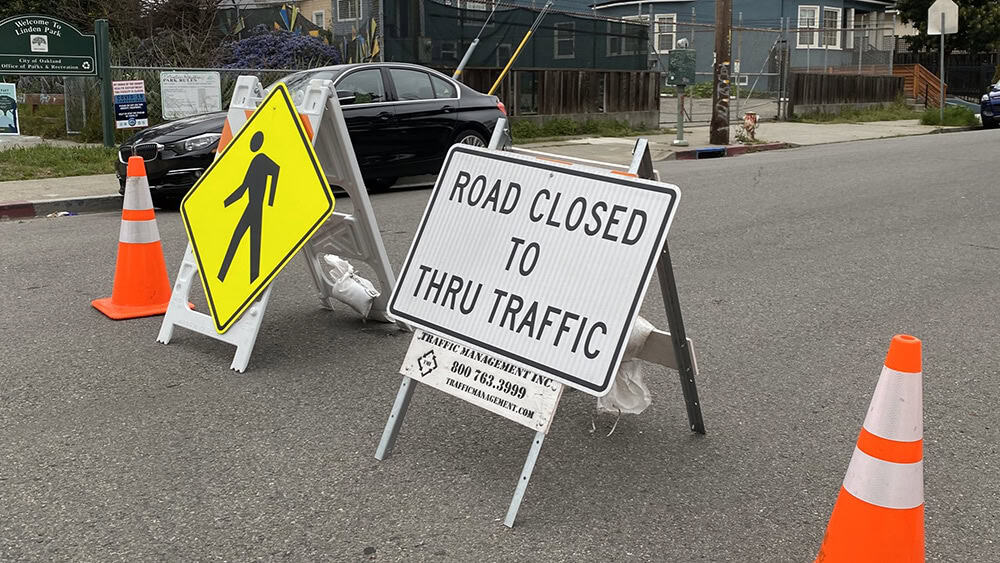
Join your neighbors in creating slow streets for your family and community
“COVID19Streets”, “Slow Streets,” “Shared Streets”, and even “Open Streets” — this concept has many names, but the goal of creating safer areas to be outdoors during the pandemic is the same. Cities all over the world are reprioritizing its streets for people, instead of cars. Businesses are moving into the streets, pop up bike lanes are accommodating the influx in bicyclists, parks are closing to cars, and best of all, neighborhoods are slowing cars to keep families and essential workers safe.
You can bring Neighborhood Slow Streets to your block here in Pittsburgh
If you feel inspired to make things better for people to walk and bike for transportation and exercise, you have the opportunity to take action and make it happen! The City has just outlined its Neighborhood Slow Streets program, and has begun taking applications for residents to calm traffic on their streets.
These temporary setups will allow you to calm traffic on your block. Selected applicants will be given high visibility signage and reflective cones to put in the street that tell drivers to slow down and expect to see people walking, biking, and playing. These signs and cones do not prevent people from accessing their homes or apartments by car. What they do is alert people to slow down and drive with care. Note: No permanent infrastructure such as speed humps, bumpouts, or chicanes will be installed by the City as part of this program.

Step 1: Determine if your street is eligible
According to DOMI, “Only low volume, local residential streets (typically tertiary streets) are eligible for consideration as Neighborhood Slow Streets. Streets with higher vehicle volumes, fixed route transit service, or designated emergency routes cannot be designated neighborhood slow streets.”
Your block may be eligible if it is:
- Identified as a potential route in the draft Pittsburgh Bike(+) Plan
- In a higher density area
- Leading to parks, other open spaces, groceries or high frequency transit
- In areas that lack significant park or open space areas
- Lacking sidewalks or safe, accessible pedestrian networks
- In census tracts with lower auto ownership rates
Step 2: Connect with your neighbors
Talk to your neighbors (from a safe distance, with a mask on) to tell them about the project, listen to their feedback and hear any concerns. If you’re connected to your neighbors digitally, send them a google form to get their feedback. You could also leave a note with your contact info on their front porch. Here is a sample note you can start with.
However you contact them, be sure to listen to people’s feedback.
*Make a copy and update with your street information
Step 3: Apply
Your street is eligible, your neighbors are on board – now it’s time to apply! Submit your info to the City and they will respond within a week with next steps.
Step 4: Let us know you applied
If you have time, please let BikePGH and the Pittsburgh community know that you applied by tagging us on social media.
Step 5 Implementation
Once you’re accepted, the City will take care of the rest. They will mark the places on the street with spray paint where they recommend placing the signs and drop off the signs at either the spot or your address.
Have any questions?
Let us know on social media and we’ll do our best to find the answers for you. This is a brand new program, and we are sure there will be some hiccups, but we are going to try our hardest to partner with the City and you to make it a success.
1 Comment
According to DOMI, “Only low volume, local residential streets (typically tertiary streets) are eligible for consideration as Neighborhood Slow Streets. Streets with higher vehicle volumes, fixed route transit service, or designated emergency routes cannot be designated neighborhood slow streets.” Publicación Noticias Gratis